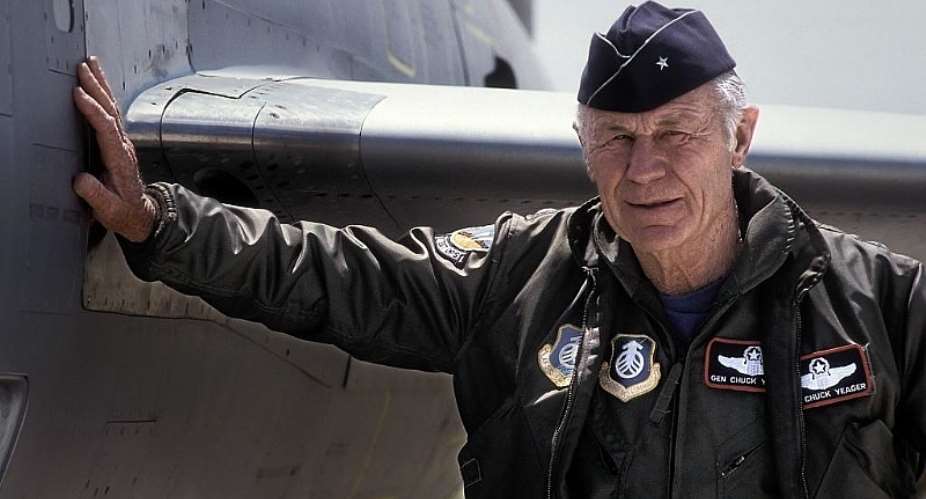Chuck Yeager, a World War II fighter ace who was the first person to travel faster than the speed of sound and whose gutsy test pilot exploits were immortalised in the bestselling book and film "The Right Stuff", has died aged 97. The cause of his death was not immediately known.
Yeager rocketed into history by breaking the sound barrier in the experimental Bell X-1 research aircraft in 1947, helping to pave the way for the US space program.
"It opened up space, Star Wars, satellites," Yeager said in a 2007 interview.
Charles Elwood Yeager was born on 13 February 1923 in the tiny town of Myra, West Virginia, and grew up fixing pickup trucks alongside his father.
Yeager joined the Army Air Corps in September 1941, three months before the United States entered World War II, and started out as an aircraft mechanic before undergoing flight training.
Shot down over Europe
Based in England, Yeager began flying combat missions in a P-51 Mustang in February 1944 and downed a German Me 109.
Yeager was shot down behind enemy lines in March 1944 but was able to rejoin his unit in England with the help of the French resistance after a harrowing trek over the Pyrenees.
He resumed combat and was credited with 12.5 aerial victories by the war's end, including downing five Me 109s on a single day and four Fw 190s on another.
Yeager booked his place in history as a test pilot when he broke the sound barrier in the rocket-powered Bell X-1 on 14 October 1947, earning him the title of "The Fastest Man Alive".
Flying the bullet with wings
After the X-1 was dropped from the belly of a B-29 bomber at 13,700 meters, Yeager flew at supersonic Mach 1.06 (1,130 kilometres per hour).
Yeager's colleague Chalmers "Slick" Goodlin, another test pilot for Bell Laboratories, once famously described the X-1 as a "bullet with wings."
It was, in fact, modelled after a .50-caliber bullet, with short wings and a pointed tip, allowing it to pierce the air more efficiently.
The aircraft, nicknamed "Glamorous Glennis" in honour of Yeager's first wife, now hangs in the National Air and Space Museum in Washington DC.
Before his record-breaking flight, Yeager received advice from Colonel Albert Boyd, head of the US Air Force's supersonic flight program.
"Get above Mach 1 as soon as you can, don't bust your butt, and don't embarrass the Air Force," Yeager said Boyd told him.
Yeager's accomplishment was depicted in the acclaimed 1983 film "The Right Stuff", based on the bestseller by Tom Wolfe.





 We’ll no longer tolerate your empty, unwarranted attacks – TUC blasts Prof Adei
We’ll no longer tolerate your empty, unwarranted attacks – TUC blasts Prof Adei
 Bawumia donates GHc200,000 to support Madina fire victims
Bawumia donates GHc200,000 to support Madina fire victims
 IMF to disburse US$360million third tranche to Ghana without creditors MoU
IMF to disburse US$360million third tranche to Ghana without creditors MoU
 Truck owner share insights into train collision incident
Truck owner share insights into train collision incident
 Paramount chief of Bassare Traditional Area passes on
Paramount chief of Bassare Traditional Area passes on
 Two teachers in court over alleged illegal possession of BECE papers
Two teachers in court over alleged illegal possession of BECE papers
 Sunyani: Victim allegedly shot by traditional warriors appeals for justice
Sunyani: Victim allegedly shot by traditional warriors appeals for justice
 Mahama vows to scrap teacher licensure exams, review Free SHS policy
Mahama vows to scrap teacher licensure exams, review Free SHS policy
 Government will replace burnt Madina shops with a new three-story, 120-store fac...
Government will replace burnt Madina shops with a new three-story, 120-store fac...
